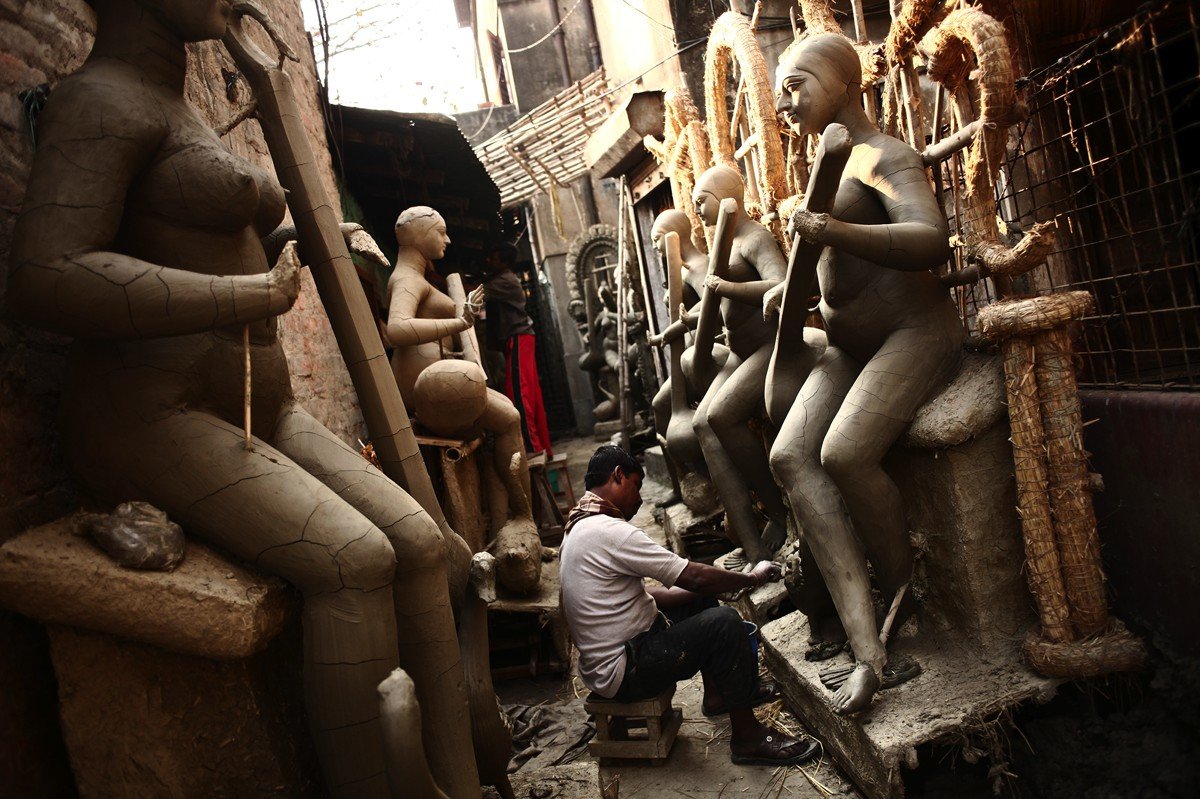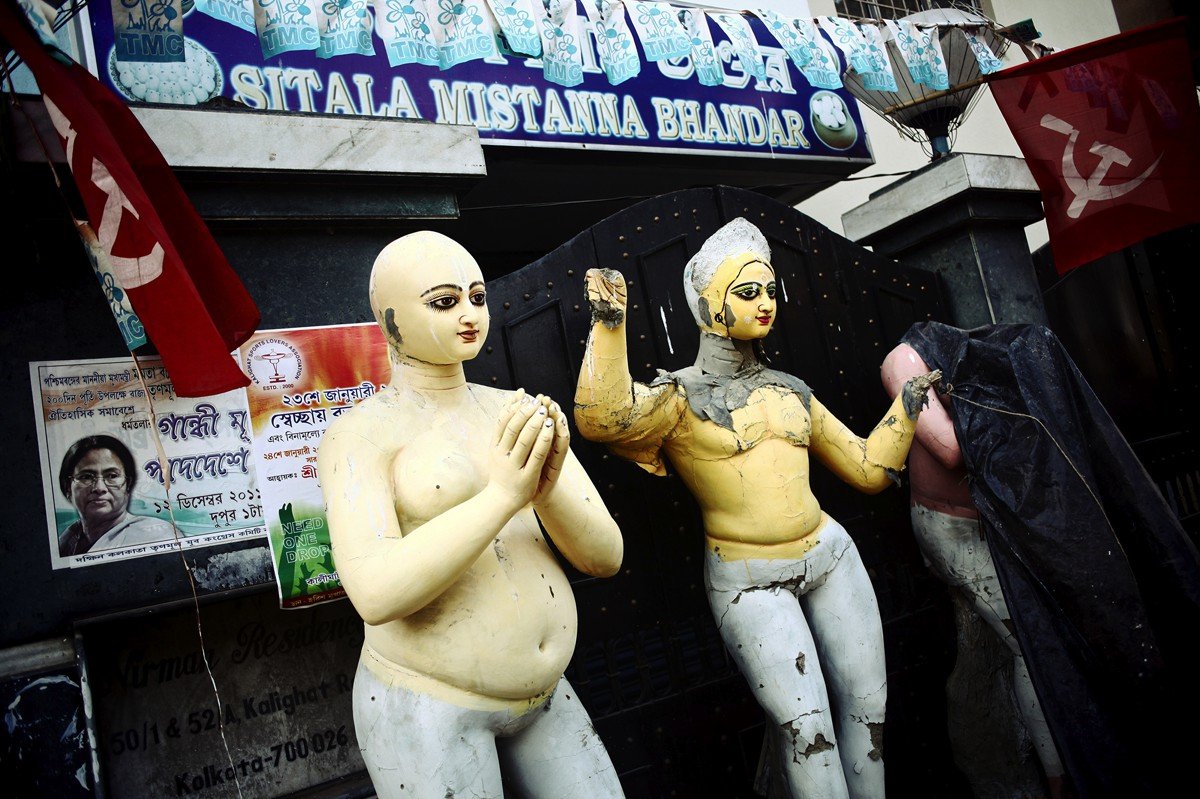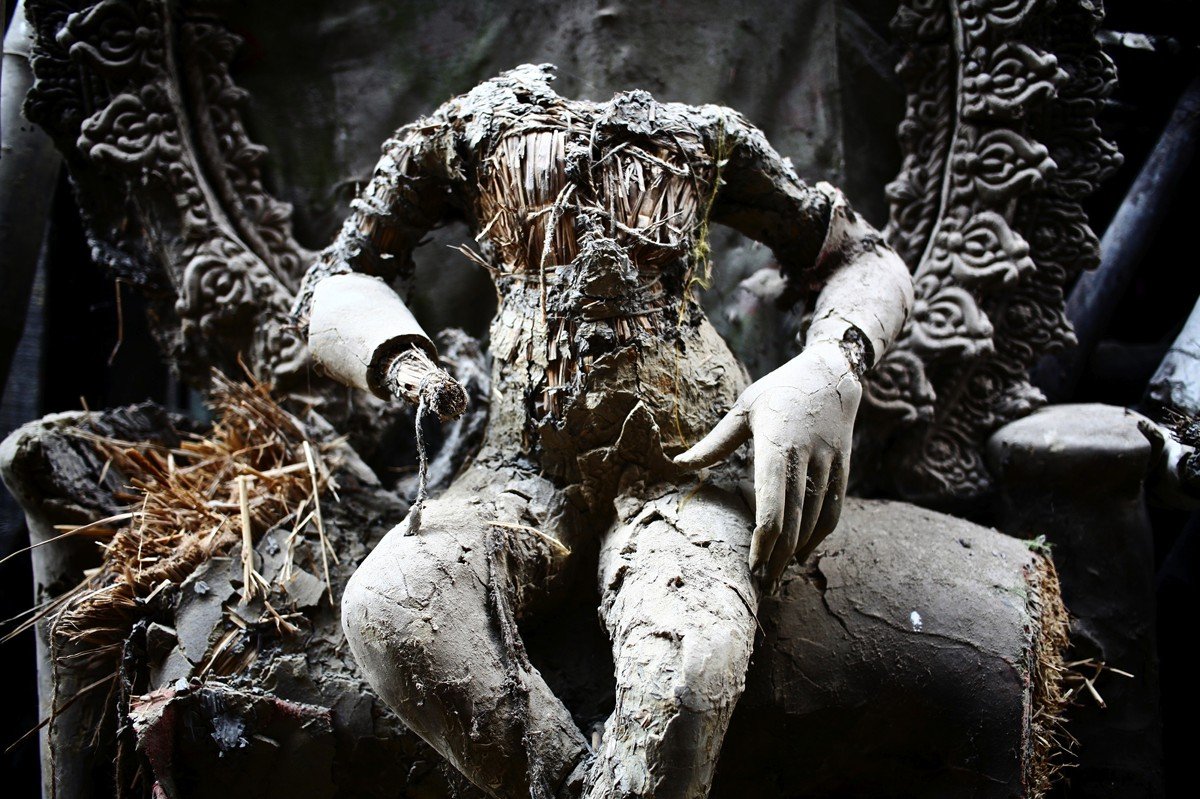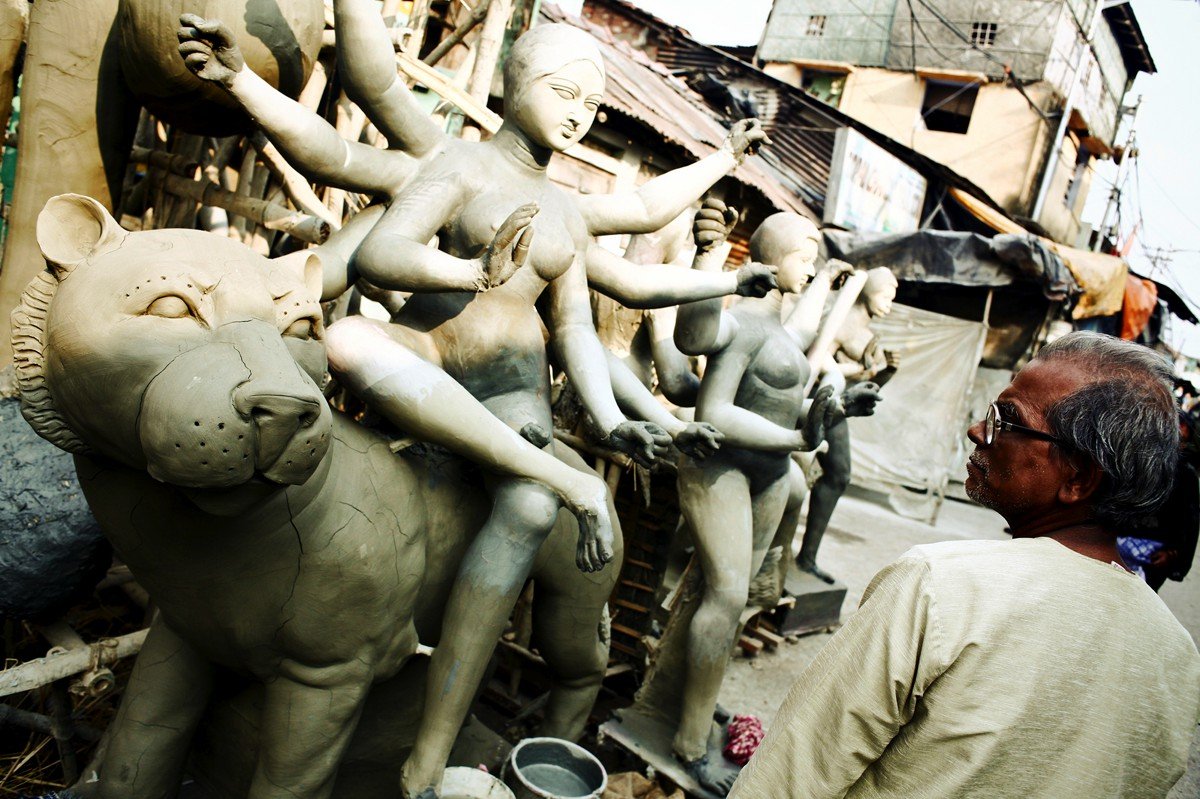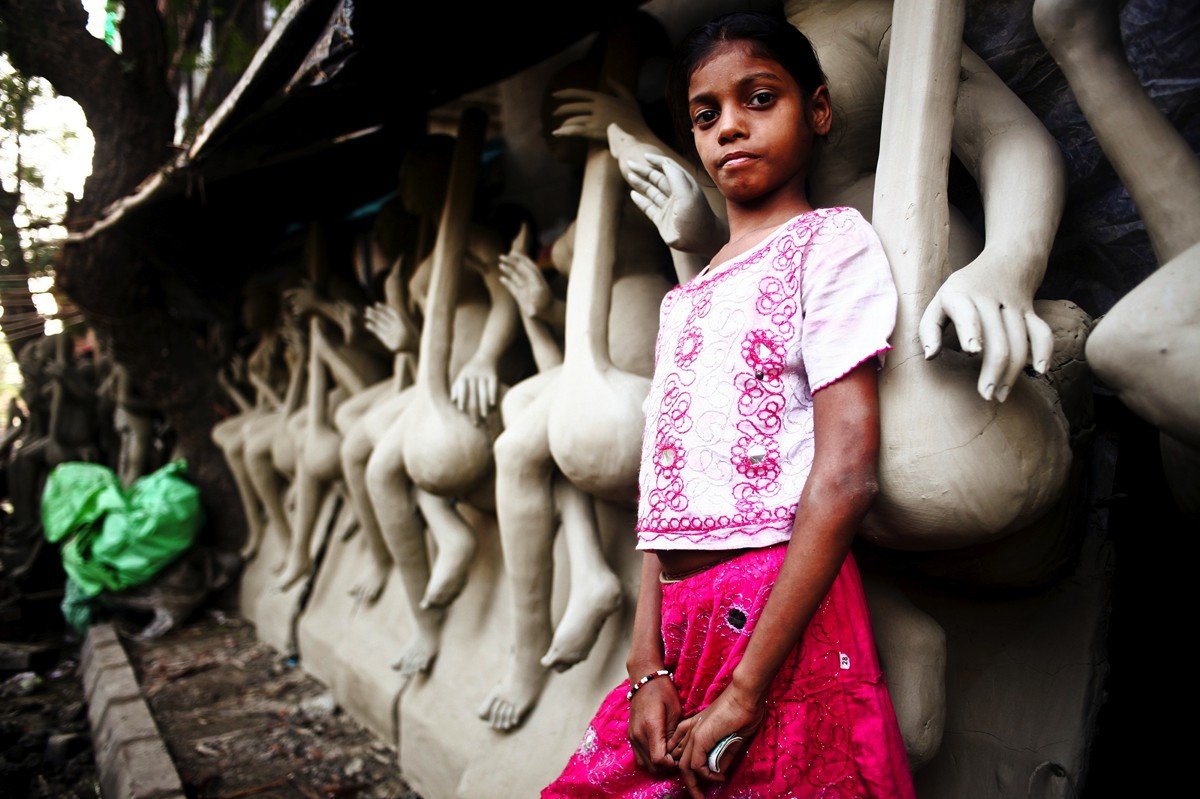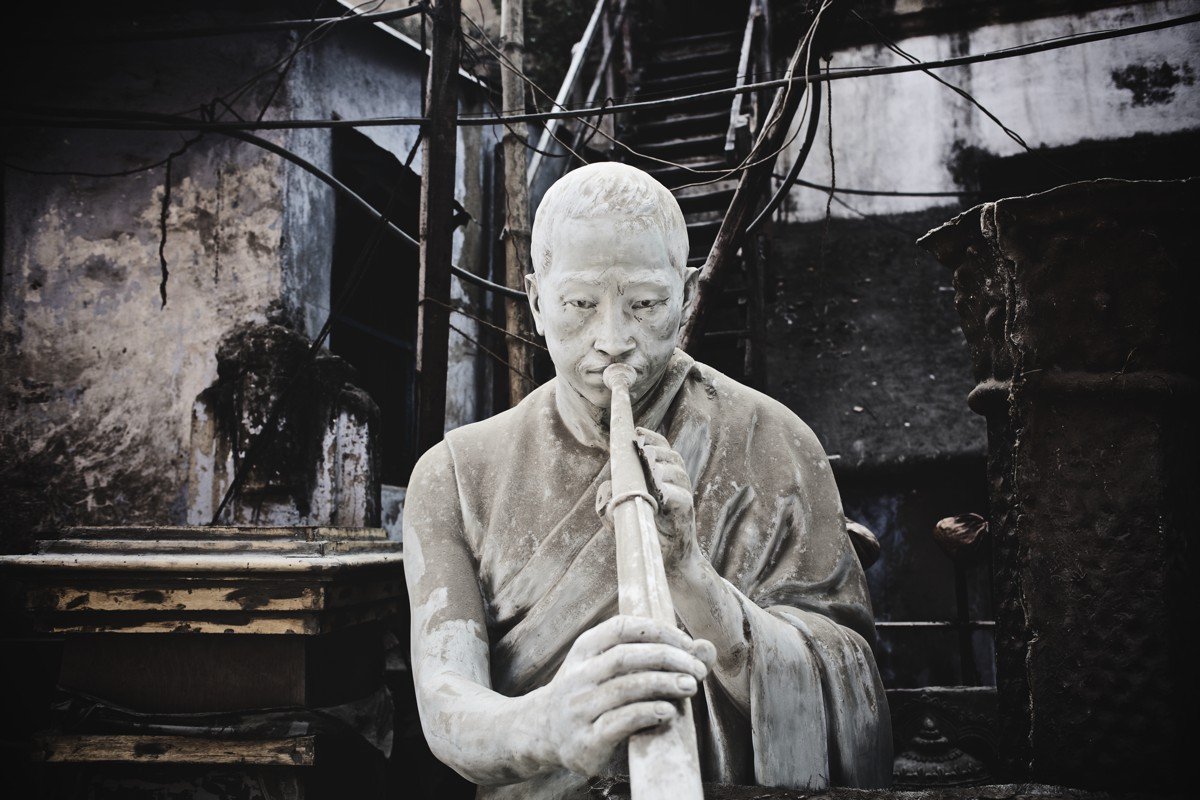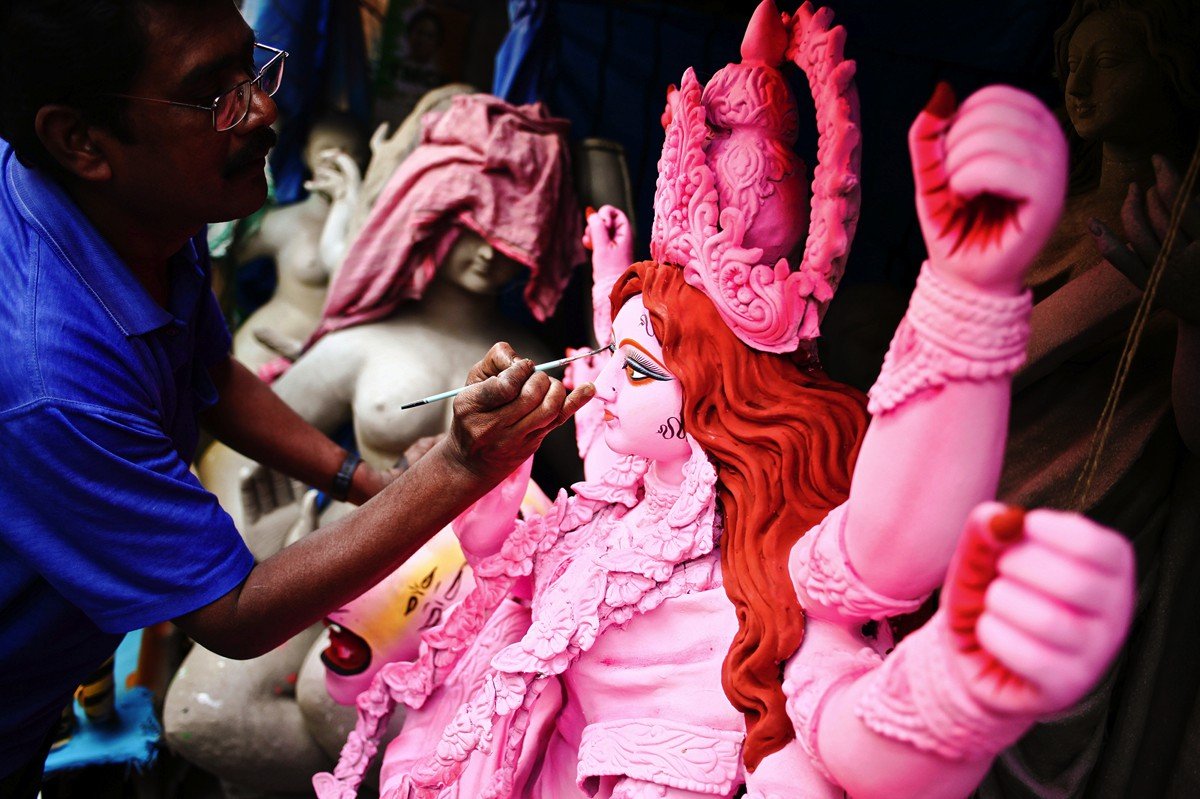
Kumartuli
Kumartuli is where Calcutta’s artisans bring the gods down to earth. Within this crammed labyrinth of workshops, the traditional crafting of murti, or deity statues, has carried on for generations.
The murti take shape in humble materials of wood, metal wire and straw. As artisans lay plaster over the rough armatures, eventually sculpting them to an alabaster finish, they take on strikingly human form. Painters take over for the final stage, bringing life to the eyes and giving each god its ethereal expression.
Finished but not yet imbued with divine presence, the statues get stockpiled outside of the workshops to make room for the next round of incarnations. The ranks of newly minted deities throng Kumartuli’s alleyways. Shiva, Parvati, Ganesh, Lakshmi, Hanuman, flanked by demigods and demon warriors of the Hindu pantheon, multiply ad infinitum. They watch city life passing by with a thousand unblinking eyes.
Once purchased by a household or temple, a priest then consecrates the murti to invoke the energy of the deity it portrays. The now-living god is adorned with silk and jewelry, often lavishly and at great expense. During festivals the murti are paraded through the streets, stopping traffic for hours on end, winding along until their journey ends on the shoreline of the Ganga. After a grand farewell, the gods are jettisoned into the river — silk, jewels and all.
They drift out to sea or else wash up on the muddy banks, battered and decayed like mortal corpses. The rapid lifecycle of Calcutta’s murti ensures that Kumartuli’s artisans never stop hustling.


